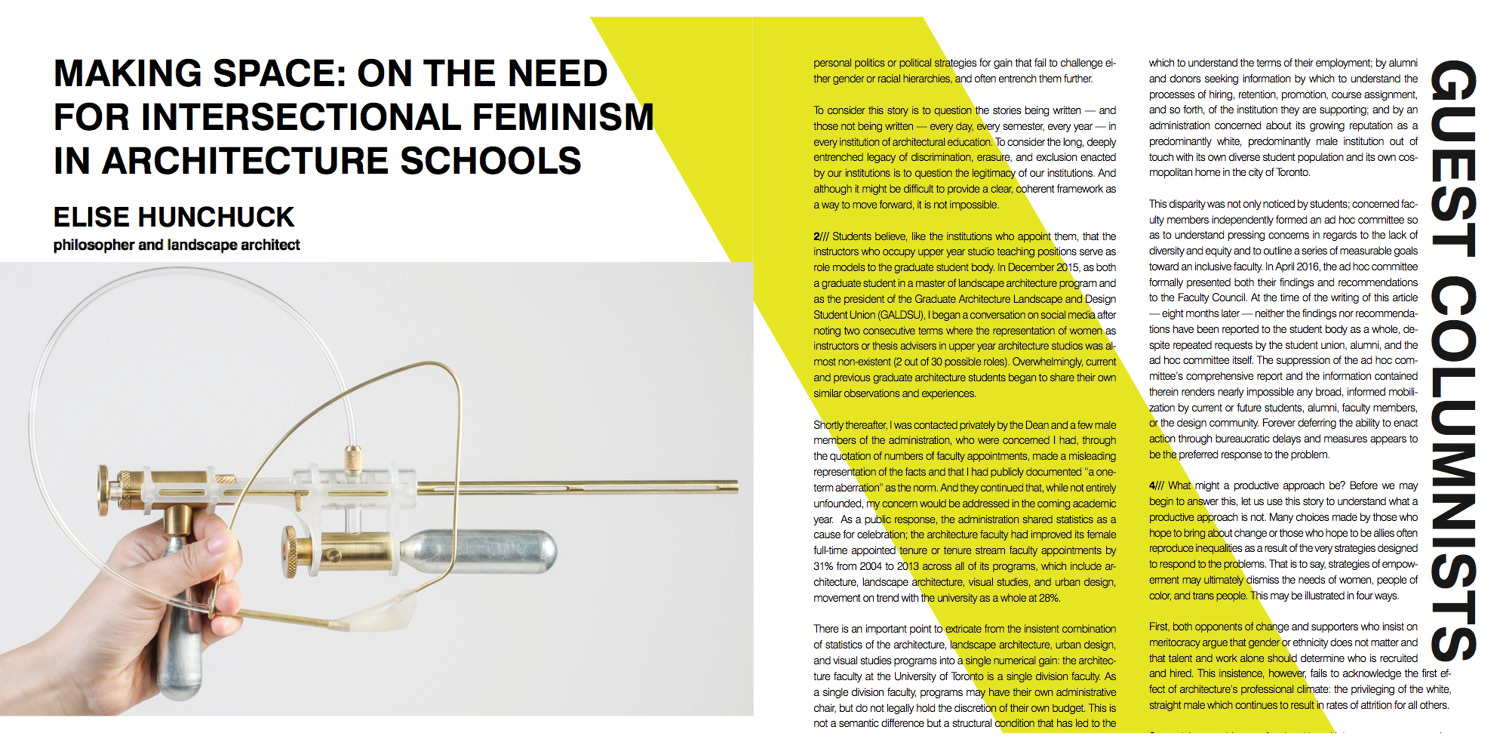
Above ––
Opening pages of guest column written for The Funambulist (Issue 09: Islands, January/February 2017) at the invitation of editor-in-chief Léopold Lambert.[2]
Making Space
in The Funambulist
Blue-eyed architectI defy you
beware architect, for if the Rebel dies it will not be without making
everyone aware that you are the constructor of a pestilential world
architect beware
who crowned you? During what night did you exchange compass
for dagger?
architect deaf to things, as distinct as a tree but as closed as armor,
each of your steps is a conquest and a spoliation and a misconception
and an assassination.
— Aimé Césaire[1]
An excerpt from Making Space: On the need for intersectional feminism in architecture schools:
“The architecture school is not yet inclusive. Let us begin with a story — an unfinished one — that began during my time in architecture school. This story aims to serve as an illustration to frame the ways in which women, people of color, and trans people have been — and continue to be — erased or excluded, silenced or ignored within the architecture school, especially within brief, periodic, flurried contestations between feminism and patriarchy.
My experiences, while my own, are not unique; first, as a mixed race graduate student looking to have an open, public conversation in the hopes of reducing a notable lack of diversity in an architecture school; and, second, as an alumna requesting the public release of a report and recommendations by a faculty adhoc committee on diversity and equity. My experiences illustrate how the educational and political interests of women, people of color, and trans people are ignored or obscured by institutional strategies that systematically ignore, suppress, erase and exclude intersectional issues. This is not to say these erasures and exclusions are purposeful. They are often the product of personal politics or political strategies for gain that fail to challenge either gender or racial hierarchies, and often entrench them further.
To consider this story is to question the stories being written — and those not being written — every day, every semester, every year — in every institution of architectural education. To consider the long, deeply entrenched legacy of discrimination, erasure, and exclusion enacted by our institutions is to question the legitimacy of our institutions. And although it might be difficult to provide a clear, coherent framework as a way to move forward, it is not impossible.”
Notes
1. And the Dogs Were Silent, trans. Clayton Eshlemann & Annette Smith, The University Press of Virginia, 1958.
2. Photographs throughout are of Yi Fei Chen’s “Tear Gun” by Ronald Smits (2016) and were generously provided by Yi Fei Chen and Ronald Smits.
To read the entire guest column, please consider subscribing to and supporting The Funambulist, a digital and printed magazine examining the politics of space and bodies. Created and edited by Léopold Lambert and in part supported by the Graham Foundation for Advanced Studies in Fine Arts. To read, order, or subscribe, please visit The Funambulist site directly.

Above ––
Cover and back matter, The Funambulist, Issue 09: Islands, January-February 2017.